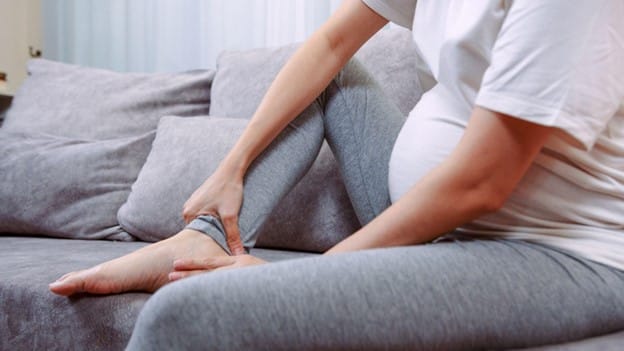Why Every Expecting Mother Should Consider Prenatal Massage
Pregnancy is a beautiful journey, but let’s be real—it comes with its fair share of discomfort. From back pain to swollen feet, your body is going through massive changes, and sometimes, it feels like there’s no relief in sight. Enter prenatal massage—one of the most effective ways to ease tension, reduce stress, and improve overall well-being during pregnancy.
But is prenatal massage safe? How does it help, and when should you start? We’ve got you covered. In this in-depth guide, we’ll explore the benefits, safety considerations, expert insights, and everything else you need to know before booking your first session.
Prenatal Massage vs. Regular Massage: What’s the Difference?
Massage therapy is great for relaxation, pain relief, and boosting circulation, but when you’re pregnant, you need a specialized approach. Prenatal massage isn’t just a softer version of a regular massage—it’s designed to support the changes in your body and prioritize your safety. Here’s how it’s different:
- Techniques Used – A traditional massage may involve deep tissue pressure or intense kneading, but prenatal massage is gentler and more targeted to ensure comfort and safety for both you and your baby.
- Body Positioning – Regular massages allow you to lie face-down or on your back, which isn’t ideal during pregnancy. Instead, prenatal massage uses side-lying positions with supportive pillows to relieve pressure and keep you comfortable.
- Focus Areas – While regular massages aim for full-body relaxation, prenatal massage hones in on pregnancy stress points—lower back, hips, legs, and feet—areas that bear the most strain.
- Safety Considerations – Some techniques, like deep pressure on certain areas (such as the ankles and wrists), are avoided because they may trigger contractions.
- More Than Just Relaxation – While any massage can reduce stress, prenatal massage is scientifically proven to help with pregnancy-specific issues like hormone regulation, reduced swelling, and preparation for labor.
A prenatal massage isn’t just about feeling good—it’s about helping your body adapt to pregnancy in the healthiest way possible. That’s why it’s important to see a certified prenatal massage therapist who understands the specific needs of expectant mothers.
The Incredible Benefits of Prenatal Massage
Prenatal massage is more than just a feel-good indulgence—it’s a therapeutic tool that can significantly improve both physical and emotional health during pregnancy. Here’s how:
1. Alleviates Back and Joint Pain
As your belly grows, your center of gravity shifts, putting extra strain on your lower back and joints. Prenatal massage helps:
- Reduce lower back pain and sciatica discomfort (American Pregnancy Association)
- Improve joint mobility and flexibility
- Ease muscle tension caused by posture changes
2. Reduces Swelling and Improves Circulation
Edema (swelling) is a common pregnancy complaint, especially in the feet and ankles. Massage stimulates the lymphatic system, helping to:
- Reduce fluid retention (Mayo Clinic)
- Improve blood circulation
- Prevent varicose veins
3. Decreases Stress and Anxiety
Pregnancy hormones are all over the place, which can lead to increased stress and anxiety. A well-done prenatal massage:
- Lowers cortisol levels (stress hormone)
- Increases serotonin and dopamine (feel-good hormones) (National Institutes of Health)
- Promotes better sleep and relaxation
4. Eases Pregnancy-Related Headaches
Tension headaches and migraines are common due to fluctuating hormones and increased blood volume. Massage techniques focusing on the neck, shoulders, and scalp can:
- Reduce headache frequency and intensity
- Improve overall relaxation (Cleveland Clinic)
5. Prepares the Body for Labor
Studies suggest that women who receive regular prenatal massages experience shorter labor times and fewer complications. Massage helps:
- Improve pelvic flexibility (Journal of Perinatal Education)
- Reduce muscle tightness
- Lower stress, which can lead to a more relaxed labor experience

Expert Insight: What a Prenatal Massage Therapist Says
We spoke with Dr. Emily Carter, Certified Massage Therapist specializing in prenatal care, who shared her insights:
“Prenatal massage is not just about relaxation—it’s about supporting a mother’s changing body. The key is to work with a therapist trained in prenatal massage to ensure safety and effectiveness. Many mothers find that consistent massage therapy helps them feel more comfortable and connected to their pregnancy journey.”
Is Prenatal Massage Safe? Here’s What You Need to Know
Yes, prenatal massage is generally safe, but there are a few important things to keep in mind:
- Work with a Certified Prenatal Massage Therapist – Not all massage therapists are trained in prenatal care. Ensure you’re working with someone experienced in pregnancy-safe techniques (American Massage Therapy Association).
- Avoid Massage in the First Trimester – Most professionals recommend waiting until the second trimester to start prenatal massage, as the first trimester carries a higher risk of miscarriage. Some experts suggest that lighter touch therapy can be safe but should only be performed by experienced therapists.
- Use Proper Positioning – You won’t be lying flat on your stomach. Most therapists will use side-lying positions with pillows for support to ensure comfort and avoid putting pressure on the abdomen.
- Communicate Any Complications – If you have a high-risk pregnancy, preeclampsia, or other medical conditions, consult your doctor before booking a massage (WebMD). Your doctor may have specific recommendations on the frequency and type of massage that is safe for your condition.
- Know Which Areas to Avoid – Certain pressure points, especially in the wrists and ankles, are thought to stimulate contractions. A trained therapist will know how to avoid these areas while still providing relief to other parts of the body.
- Choose the Right Type of Massage – Swedish massage is generally the safest for pregnancy, while deep tissue and certain other intense techniques may not be recommended.
Prenatal massage is a wonderful tool for relaxation and relief, but working with an expert and ensuring proper communication with your healthcare provider will help make your sessions as safe and effective as possible.
When to Start and How Often to Get a Prenatal Massage
Experts generally recommend starting prenatal massage after the first trimester, around 13-14 weeks. The first trimester carries a higher risk of miscarriage, so most massage professionals advise waiting until the second trimester to begin. However, gentle touch therapy by an experienced prenatal massage therapist may still be an option for some mothers-to-be.
- First and Second Trimester: Receiving a massage once or twice a month can help relieve minor aches and pains, promote relaxation, and improve circulation.
- Third Trimester: As your body experiences increased discomfort, weekly massages may provide essential relief, especially for back pain, swollen feet, and sleep difficulties.
- Pre-Labor Preparation: Some women opt for more frequent massages leading up to their due date to help their bodies relax and prepare for labor.
If you’re unsure about the frequency of massages, consult with your prenatal healthcare provider and your massage therapist to tailor a schedule that works best for you.

Areas to Avoid During DIY Prenatal Massage
A massage is a great way to relax during pregnancy and not everyone will have the chance to go to a professional. With that in mind, it’s important to know which areas should be avoided—especially if you’re doing a DIY massage at home or receiving a massage from a partner who is not a trained therapist.
1. Abdomen
The abdominal area should be treated with extreme caution. Applying deep pressure to the belly can cause discomfort, disrupt circulation, or even trigger contractions. Instead, focus on gentle, circular movements with minimal pressure if you want to soothe the skin.
2. Ankles and Feet
Certain reflexology points around the ankles and feet are believed to be linked to uterine stimulation and contractions. While a light foot massage can relieve swelling and discomfort, it’s best to avoid applying firm pressure to the inside of the ankle or heel area. If you’re unsure, consult a prenatal massage therapist before incorporating foot massage into your routine.
3. Lower Back (Deep Pressure Techniques)
While a gentle massage on the lower back is beneficial, deep pressure on the sacrum (the triangular bone at the base of your spine) should be avoided. Some studies suggest that excessive pressure in this area could contribute to early labor.
4. Pressure Points on the Wrists and Hands
Similar to the ankles, there are acupressure points on the wrists and hands that have been traditionally linked to inducing contractions. While no definitive scientific evidence proves this, it’s better to be cautious and avoid deep pressure in these areas.
5. Lying Flat on Your Back for Extended Periods
Even though this isn’t a specific massage technique, it’s worth mentioning that pregnant women should avoid lying flat on their backs for extended periods. This position can put pressure on the vena cava, the major vein that carries blood back to the heart, potentially reducing circulation to both mother and baby.
If you’re considering a DIY massage, it’s always best to consult with a certified prenatal massage therapist to ensure you’re using the safest techniques.

FAQs: Everything You Need to Know About Prenatal Massage
1. Can I get a prenatal massage in the first trimester?
It’s best to wait until the second trimester due to the higher risk of miscarriage in the first trimester (American College of Obstetricians and Gynecologists).
2. Is deep tissue massage safe during pregnancy?
Light to moderate pressure is recommended. Avoid deep tissue massage on the lower back and abdomen.
3. What are the best massage techniques for pregnancy?
Swedish massage and lymphatic drainage are safe and effective for relieving tension and swelling.
4. How long should a prenatal massage session last?
Most sessions last between 60 to 90 minutes, depending on your comfort level.
5. Can prenatal massage help with labor?
Yes! Studies suggest that regular prenatal massage may lead to shorter, less painful labors by improving relaxation and flexibility.
6. Are there any areas to avoid during prenatal massage?
Yes—therapists avoid pressure points in the ankles and wrists, as they are believed to stimulate contractions.
How to Get a Prenatal Massage?
Choosing the right place for prenatal massage is just as important as deciding to get one in the first place. You need a clinic that understands the unique needs of pregnancy and can give you a safe, professional environment. The Self Centre Massage & Wellness has been recognized as Edmonton’s Top Choice Massage Therapy Clinic for 2025, a testament to its commitment to quality care and excellence in massage therapy.
At The Self Centre Massage & Wellness, our certified prenatal massage therapists provide safe, effective, and relaxing treatments tailored to your pregnancy journey.
We also offer direct billing, flexible appointment scheduling, and specialized pregnancy support to ensure the best experience for you.
Book your prenatal massage today: Schedule an Appointment
Final Thoughts: A Must-Have for Every Mom-to-Be
Pregnancy can be an overwhelming experience, but prenatal massage is one of the most effective ways to stay comfortable, relaxed, and pain-free. Whether you’re dealing with swollen feet, backaches, or stress, regular massage therapy can make a significant difference.
So, why wait? Invest in your well-being and experience the benefits of prenatal massage today!








